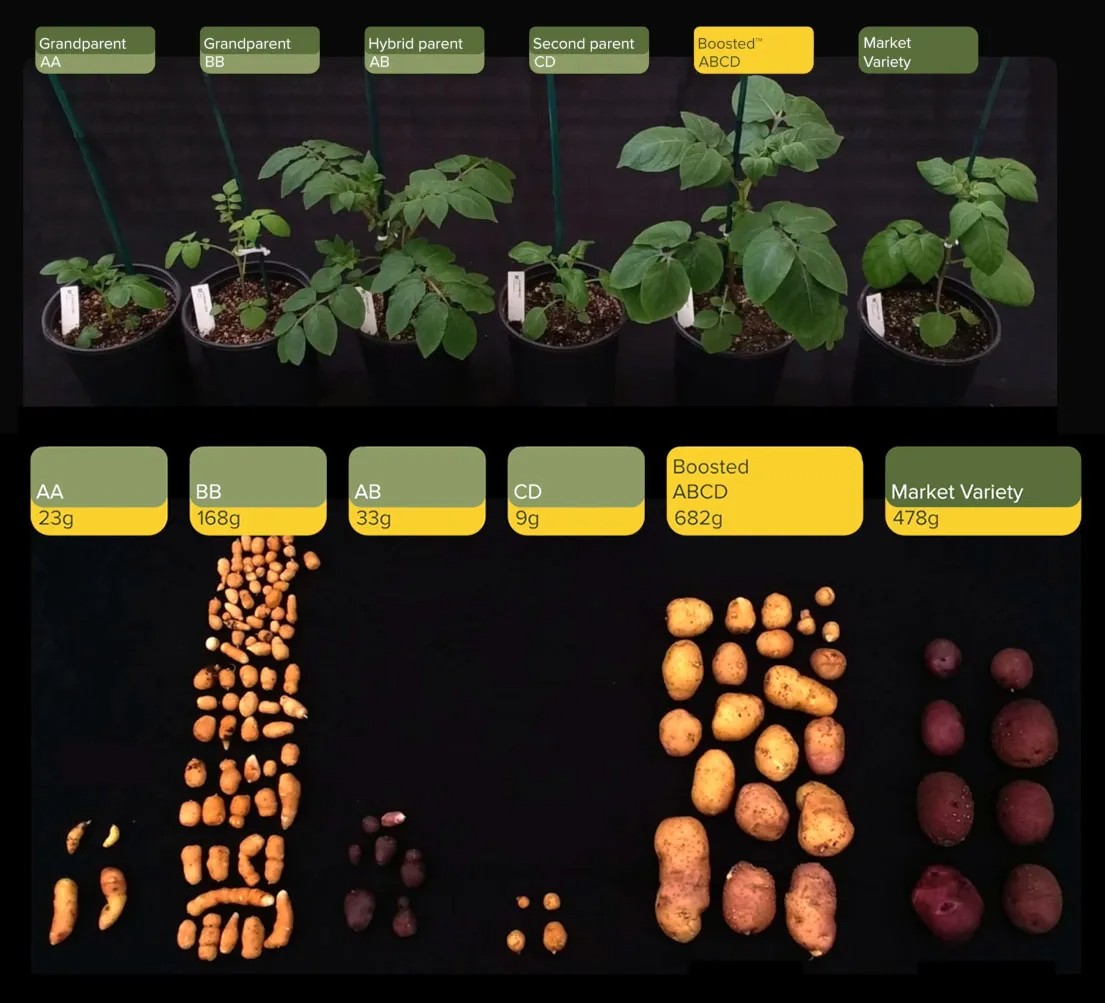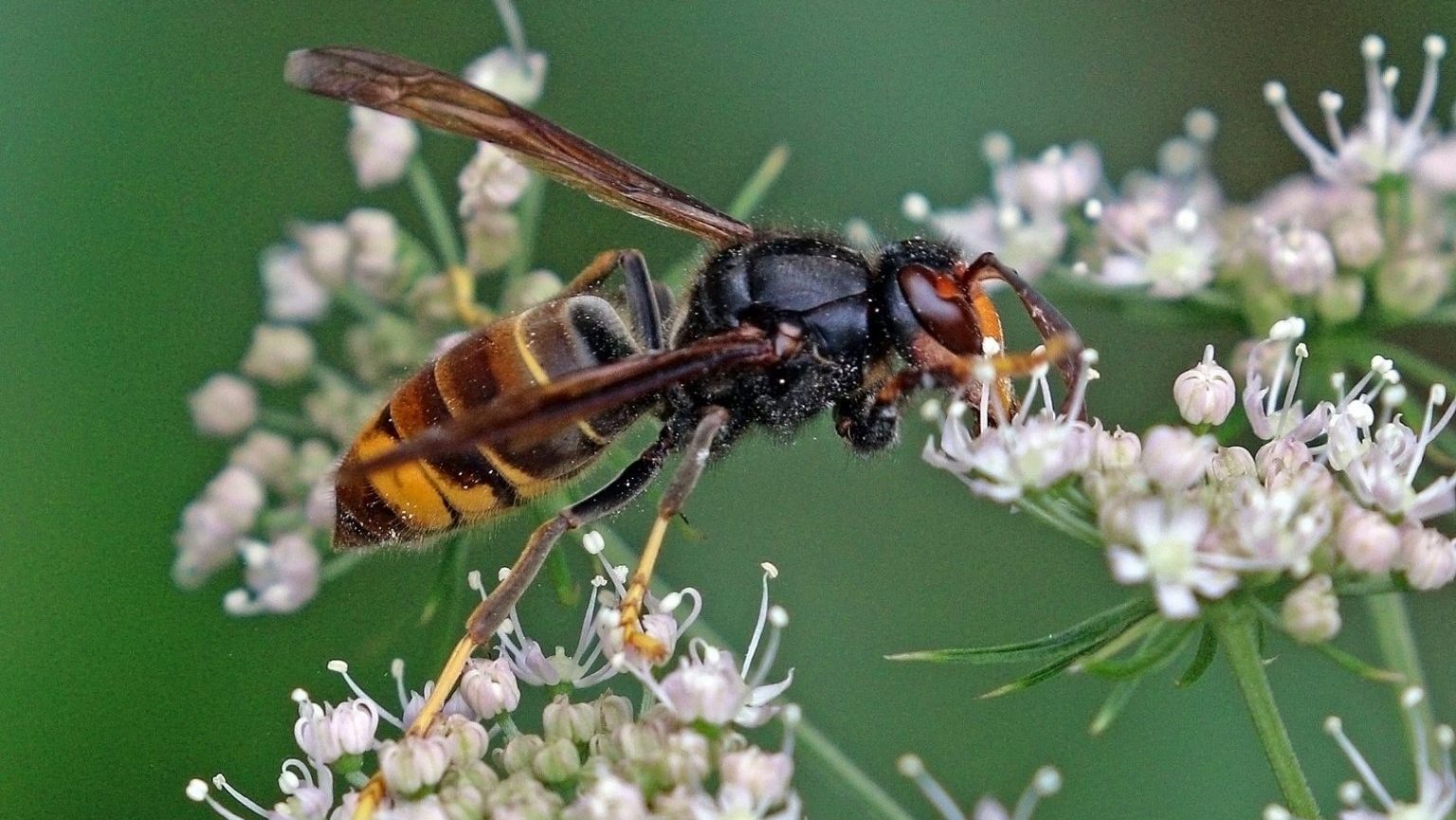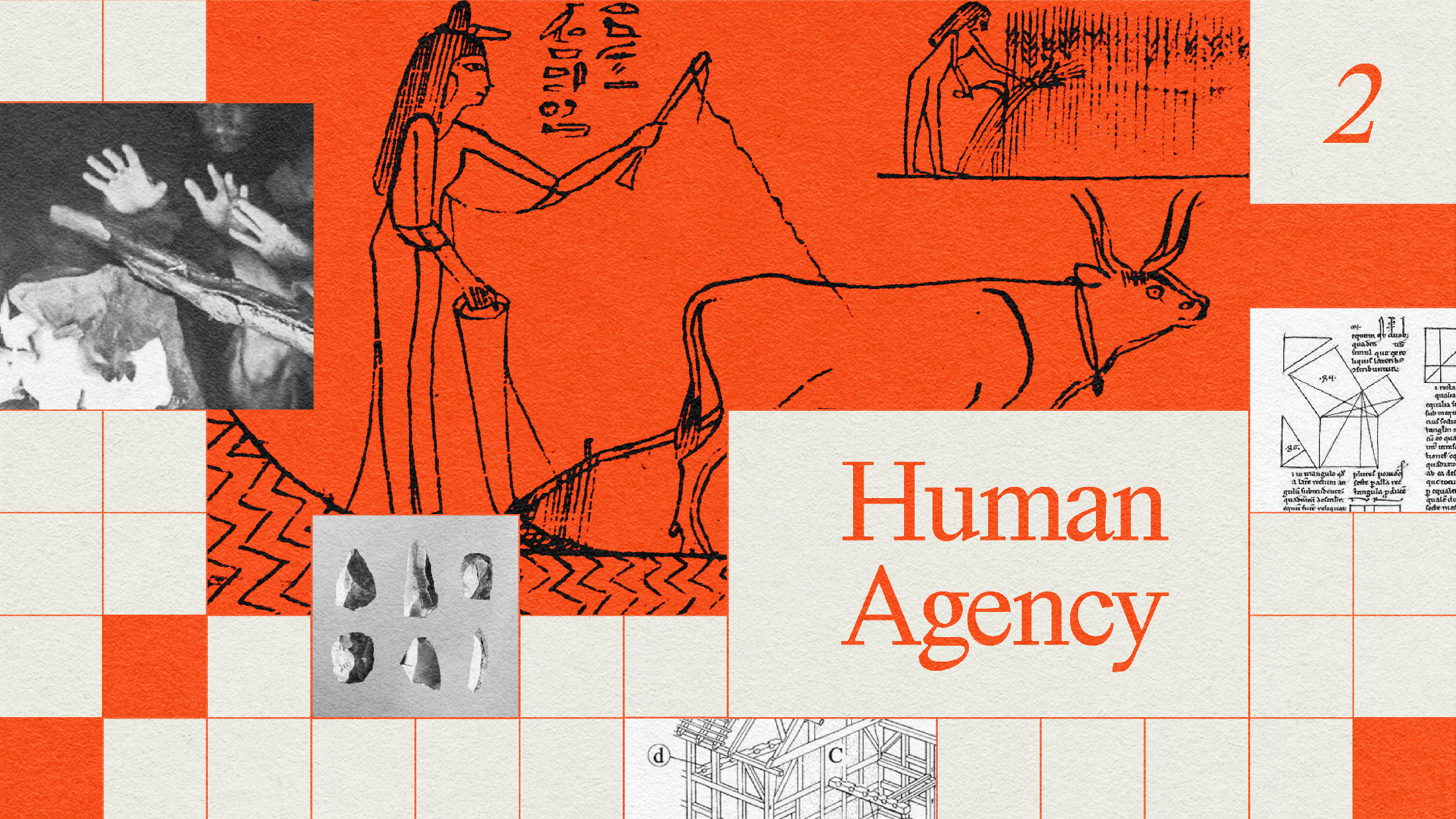Boosted Breeding and beyond: 3 tech trends that could end world hunger

- Between 1970 and 2015, developing nations made rapid progress in combating hunger, but that progress has since stalled.
- Researchers are working hard to develop the technologies and techniques that will usher in a Fourth Agricultural Revolution.
- New breeding techniques, precision agriculture, and biologicals are some of the latest trends in more sustainable, efficient farming.
This article is an installment of Future Explored, Freethink’s weekly guide to world-changing technology. You can get stories like this one straight to your inbox every Saturday morning by subscribing here.
It’s 2050. The global population has increased to nearly 10 billion, and while we’re still working to ensure every person on the planet has the opportunity to live their best life, we have eliminated one of humanity’s oldest foes: tonight, no one will go to bed hungry. Here’s how we’ll (maybe) do it.
Tech to feed a warming world
Right now, this hunger-free future might seem like a pipe dream, given the scope of the problem — nearly 800 million people worldwide are hungry and a third of the population doesn’t know where their next meal is coming from.
A world without hunger is possible, though, and the development and deployment of new farming technologies could be one key to manifesting it.
To find out how, let’s take a quick look at the history of food production and the trends that could lead us into a future where no one is hungry.
Where we’ve been

Where we’re going (maybe)
Thanks to a combination of these technologies and economic growth, hunger rates in developing nations decreased from 33% to just 12% between 1970 and 2015. Unfortunately, progress in combating hunger stalled around that time, and rates since the pandemic are now on the rise.
According to the UN, climate change is a major reason for decreasing food security — increasing temperatures, irregular precipitation patterns, and more extreme weather events are making it harder for farmers to grow as much food as they used to.
Ironically, many of the technologies that helped drive down hunger in the past are now contributing to the problem — chemical fertilizers, for example, release greenhouse gasses into the atmosphere, as do fossil fuel-powered farm equipment.
A Fourth Agricultural Revolution featuring new, sustainable technologies may be needed to reverse the trend and usher in a world free of hunger. Here are three technologies that could lead that revolution.
New breeding techniques
While genetically engineered foods aren’t brand new, new breeding techniques (NBTs) like CRISPR are making it easier for scientists to manipulate the genomes of crops in ways that make them more resilient toward climate change.
Researchers at Tel Aviv University, for example, have used CRISPR to create tomatoes that require less watering, while UC Davis scientists have used the tech to develop a strain of rice that’s resistant to a fungal disease that’s expected to thrive in a warming world.
Most recently, a team from UC Berkeley proved it was possible to use CRISPR to hack the genes involved in photosynthesis in rice, suggesting the tech could allow us to super-charge the plant’s ability to convert sunlight into the energy it needs to grow.

In most cases, NBTs change plants in ways that could happen naturally, through genetic mutations or traditional breeding, for example. That sets the altered plants apart from transgenic crops, which contain genes from more than one species and are subject to stricter regulations.
While we haven’t seen too many crops developed using NBTs reach consumers just yet, David Friedberg, founder and CEO of the Production Board, a holding company that invests in agtech startups, told Freethink that regulators are starting to catch on to their potential.
“I think a lot of folks now understand how [an NBT] works,” said Friedberg. “They understand the benefits of it. They understand that the system does not introduce new proteins or foreign DNA or any of these other facets that I think held up GMOs and transgenic systems.”
When you have more genes, the organisms have a tendency to be healthier, to live longer, to grow faster.
David Friedberg
As the CEO of agtech startup Ohalo, Friedberg is now leading the charge to get an NBT called “Boosted Breeding” out of the lab and onto farms.
While most plant cells contain two sets of chromosomes, their sex cells (pollen and ovum) contain just one. When the plants reproduce, their offspring then inherit the one set of chromosomes from each of their parents.
Exactly which genes from a plant’s two sets of chromosomes will be included in each of their sex cells is random. As a result, offspring are all a little bit different. (This same process occurs in people, too, and explains why non-twin siblings aren’t identical.)
Boosted Breeding causes a plant’s sex cells to contain both sets of their chromosomes. As a result, offspring inherit all of their parents’ DNA, not just half.
“You end up with greater genetic diversity because you have more genes in the offspring, and when you have more genes, the organisms have a tendency to be healthier, to live longer, to grow faster,” Friedberg told Freethink.

Because a Boosted plant’s offspring would always be identical, the tech could make it easier to breed plants for desirable traits, including ones that could help them thrive in a changing climate.
It could also allow us to create uniform seeds for crops that are currently cultivated through vegetative propagation, a process where we coax new plants to grow from bits of existing ones, rather than through traditional reproduction.
Potatoes — one of the world’s most consumed crops — are grown this way.
Farmers will save some potatoes from a fall harvest so that they can chop them up and plant the pieces in the spring. Because they’re essentially cloning their existing potatoes, they’re able to avoid the variability that would come from using potato seeds, with their random mix of genes.
“If we could put seed in the ground, we would remove all of the warehouses and tractors and trucks and conveyor belts we use to move tons of potatoes into a storage facility,” explained Friedberg, adding that the whole process of transporting and storing potatoes for propagation “wastes a ton of energy, a ton of land, and a ton of resources.”
Ohalo has already trialed Boosted Breeding with a variety of crops, including potatoes, and found that it could increase yields by 50-100%. It is now preparing for commercial trials and looking for partners to get its Boosted crops out into the world.
“It’s a real profound change in how we’re gonna do plant breeding in agriculture and how humans can get more food per acre using less water, less land, less fertilizer per unit output,” said Friedberg. “It’s much more sustainable and certainly will help farmers bring the cost of food down — all the benefits that come with increased productivity.”

Because it is possible for plants to naturally evolve to contain more than the standard two sets of chromosomes in their cells (cultivated strawberries have eight), Ohalo should have an easier path to regulatory approval than if it was trying to introduce a food that couldn’t exist in nature.
In general, it’s already easier for developers to secure approval to use an NBT to make food than it was in the past, thanks to regulators’ increased understanding of how CRISPR and other NBTs work, and the process could soon be streamlined even further, according to Friedberg.
“They have a proposal on the table that you don’t even need to file that you’ve used a new breeding technique going forward,” he told Freethink. “Once that proposal goes into effect, farmers, plant breeders, agronomists, and seed companies can start to use them to bring products to market without needing to file with the USDA.”
Precision agriculture
While new breeding techniques can make crops more climate-resilient, a trend called “precision agriculture” is improving farming itself, using everything from drones and robots to AI and GPS.
The core idea behind precision agriculture is that farmers can use data to make smarter decisions about how they use water, pesticides, and other inputs — this can increase a farm’s efficiency and crop yields, even in the face of a changing climate.
DJI, the world’s leading agricultural dronemaker, recently unveiled the Agras T50 and Agras T25 drones, which can autonomously fly over a farmer’s fields and send real-time updates on crop conditions to an app.
Farmers can also trigger the drones to spray water or chemicals on their crops — they can even choose the size of the droplets they want the drones to spray.
“With our proven solutions for crop protection, family farmers and large-scale growers can improve yields, reduce chemical usage, and cut costs, while minimizing environmental impact,” said Yuan Zhang, Head of Global Sales at DJI Agriculture.

John Deere — arguably the biggest name in farming — has been at the forefront of precision agriculture. It started exploring the concept in 1994, and today, it has an entire Precision Ag division focused on technologies to help farmers improve efficiency.
In 2021, it unveiled its first self-driving tractor, which is currently in beta testing. It uses GPS, sensors, and AI software to traverse fields, planting perfectly spaced seeds in perfectly straight rows to maximize yields, while farmers monitor everything remotely.
In January 2024, John Deere announced a partnership with SpaceX to connect its high-tech equipment to the aerospace company’s Starlink satellite internet network, making all of the tools accessible to farmers in rural areas with unreliable internet connectivity.
“The SATCOM solution unlocks the John Deere tech stack so every farmer can fully utilize their current precision agriculture technology in addition to the new innovative solutions they will deploy in the future,” said Jahmy Hindman, John Deere’s senior VP and CTO.
This helps farmers make better decisions so they don’t waste money on products they don’t need.
David Friedberg
There’s no shortage of startups in the growing precision agriculture space, either.
Pattern Ag, a startup under the Production Board’s umbrella, helps farmers improve efficiency by identifying all the little microbes living within their soil. It then uses AI to predict the likelihood of those organisms causing specific problems in the next growing season with, it says, 90% accuracy.
“This helps farmers make better decisions so they don’t waste money on products they don’t need,” Friedberg told Freethink. “They don’t spray synthetic chemistry they don’t need on the field. They can be more targeted in the fertilizer applications they’re doing.”
Seattle-based Carbon Robotics, meanwhile, is developing a farming robot that uses GPS to autonomously navigate farmland while an AI-powered camera system identifies weeds in the soil below. Lasers on the underside of the robot then zap them out of existence — potentially reducing or even eliminating the need for chemical herbicides.
“I see a farm of the future where we have massive data to tell us what’s best from a prescriptive standpoint,” Josh Roberts, a farmer using Carbon’s laser weeder, told Freethink in 2023. “We will farm specifically to what the crop is telling us. We can feed the world for less — that’s the value for me in the next five years and beyond.”

Currently, these and other precision agriculture technologies are mainly used on large farms in developed parts of the world — as of June 2023, 27% of US farms and ranches were already taking advantage of precision agriculture technologies. But maximizing efficiency in those settings alone won’t be enough to ensure everyone, everywhere has enough to eat.
As during the Green Revolution, we need to make these technologies accessible to farmers everywhere, which is why the UN developed strategies to help project managers and policymakers overcome existing barriers to their adoption by smallholder farmers in developing countries.
These include investing in digital literacy programs, increasing mobile internet access, and encouraging the formation of farming cooperatives.
“Farmers in cooperatives benefit from greater bargaining power, easier access to loans, and better access to information and trainings,” writes the UN. “Being part of a cooperative also allows farmers to share capital and technology, making affordable advanced applications like precision spraying and use of agricultural robots.”
Biologicals
While precision agriculture can help farmers be more deliberate with their use of fertilizers, pesticides, and other chemicals, another growing trend — the use of biologicals — could reduce the need for them altogether, helping make farming more sustainable without affecting outputs.
Biologicals are farming products that contain natural ingredients, such as plant extracts, living microbes, and even insect pheromones. Some are designed to protect crops from pests and other threats, while the goal of others is to encourage plant growth.
“If you think about what a farmer spends money on, they spend money on seed, fertilizer, and crop protection — herbicides to get rid of weeds, insecticides to get rid of insects, and fungicides to get rid of fungus and mold,” Friedberg told Freethink.
“Biologicals are a very fast growing segment in agriculture that’s largely going to start to erode synthetic fertilizer and synthetic crop protection products,” he continued.
Biologicals that could reduce the need for nitrogen fertilizers are particularly alluring as we work to make farming more sustainable.
The Haber-Bosch process used to create synthetic fertilizer from atmospheric nitrogen revolutionized agriculture in the 20th century, but it’s also a contributor to climate change — researchers estimate that it’s responsible for about 1% of all human-made CO2 emissions.
Biologicals that pull nitrogen from the air could reduce the need for those fertilizers — Corteva Agriscience’s Utrisha N, for example, uses microbes that enter the leaves of plants and then pull nitrogen from the air into the plant tissue.
“With climate change, drought, and other abiotic stressors posting increasing challenges to crop production, biostimulant technologies can provide needed support by boosting nutrition, mitigating stress, and helping plants recover faster after a stress event,” Mike Eiberger, US biologicals portfolio marketing leader with Corteva, told Successful Farming.
You can actually get rid of the synthetic chemistry, save money, and do it in a more sustainable way.
David Friedberg
While some biologicals help plants grow, others protect them. European agtech company Biotalys’ EVOCA, for example, contains protein fragments that cause the death of multiple plant pathogens.
Biotalys is now working to get EVOCA approved by regulators, and in May 2024, it launched field trials for its second biological product, BioFun-6, which targets a fungus called “botrytis.”
Unlike traditional fertilizers, pesticides, and herbicides, which can run off poisonous chemicals into the water supply, the active ingredients in biologicals like these won’t pollute our environment.
“Those proteins over time will biodegrade — they go back into the soil,” said Friedberg. “They’re just like any other biological protein, but they have a good effect. You can actually get rid of the synthetic chemistry, save money, and do it in a more sustainable way.”
Biologicals do have their limitations, though. They’re more expensive than synthetic alternatives and often require more applications, which increases labor costs. And while they can reduce the need for synthetic chemicals, they can’t outright eliminate it.
Still, reduction is a step in the right direction as we work to make farming less of a burden on the environment, while ensuring we can still produce enough food to feed a growing population.
“If we can get farmers to use 30% or 40% less nitrogen fertilizer by applying a microbe that can pull nitrogen out of the atmosphere, it can have a dramatic effect on the carbon footprint of agriculture,” said Friedberg. “It’s a more sustainable way of doing agriculture.”
The big picture
These aren’t the only trends driving us toward a more sustainable, more efficient agriculture industry, the kind we’ll need in order to feed a growing population in the face of climate change.
Vertical farms could one day allow us to grow food in more places, while electric farming equipment can reduce greenhouse gas emissions. Though we still need to work out the economics, lab-grown meat could potentially reduce carbon emissions, too.
Producing enough food in enough places is just one of the barriers to ending world hunger, though. To achieve that dream, we’ll also need to reduce conflict — the primary driver of hunger in the world today.
“Where wars rage, hunger reigns — whether due to displacement of people, destruction of agriculture, damage to infrastructure, or deliberate policies of denial,” said Antonio Guterres, secretary-general of the United Nations.
War isn’t a problem a single new technology can solve, but it’s possible that by making agriculture more productive and sustainable, we could also create a healthier, more harmonious world.
“Done right, climate action can help build peace,” said Simon Stiell, executive secretary of the UN Framework Convention on Climate Change.
This article was originally published by our sister site, Freethink.





